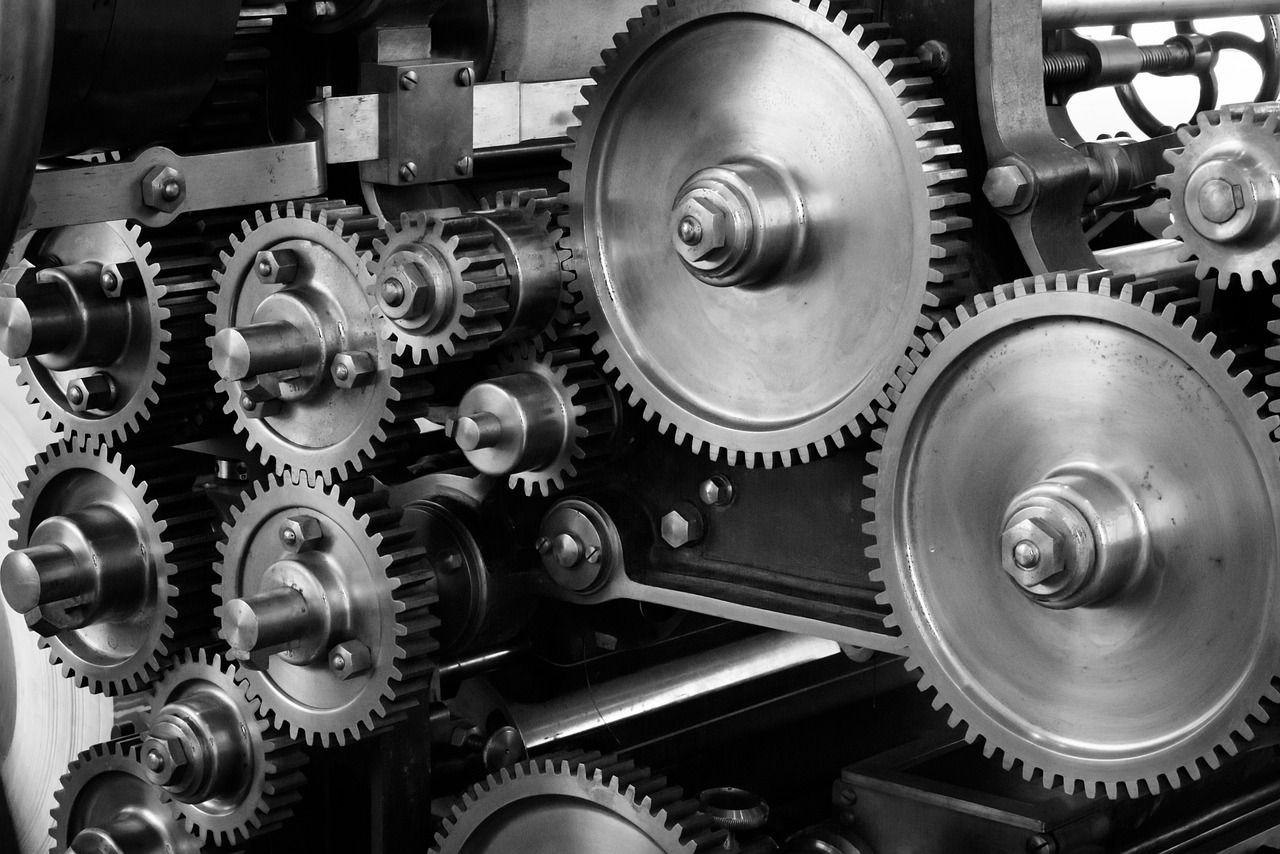business resources
How to Choose the Right Gears for Optimal Machinery Performance
3 Feb 2024, 7:26 am GMT
Selecting the appropriate gear is a critical decision in the design and maintenance of industrial machinery. High-quality, properly chosen gears ensure not only the efficient operation of machines but also their longevity and reliability.
This guide will walk you through the essentials of gear selection, covering factors such as material composition, gear geometry, load capacity, and environmental considerations. Understanding these elements will enable you to make informed choices, reduce mechanical failure, and achieve optimal performance in your machinery's operations.
Material Composition
Selecting the right material for gears is paramount as the material's properties directly affect the durability and functionality of machinery. Metals like steel are widely used for their strength and resistance to wear, especially in high-load applications. However, plastics may be preferable for quieter operation and corrosion resistance. When considering materials, assess factors including tensile strength, hardness, and fatigue limits to ensure compatibility with the intended use.
The impact of thermal treatment on gear materials cannot be understated. Processes like carburizing or induction hardening can significantly increase surface hardness and, consequently, the gear's resistance to wear and tear. It's crucial to match the thermal treatment to the specific material and application to avoid brittleness or other negative properties.
Automation and technological advancements have also led to the development of composite materials that boast higher strength-to-weight ratios than traditional metals. While these may be more expensive, they offer improved performance and lower maintenance costs in the long run. You can more information here about high-quality gear materials and their applications, or do some research online to learn more and stay updated on the latest advancements in gear technology. Plus, always consult with experts for their professional recommendations.
Gear Geometry
The geometry of a gear involves several critical factors, each contributing to the gear's performance. The tooth profile, pitch, and helix angle must all be tailored to meet the specific demands of your machinery's operation. Precision in the design of these elements ensures smooth engagement and efficiency while reducing the potential for premature wear or failure.
Helical gears are often favored for their smoother and quieter operation compared to spur gears. The angled teeth engage more gradually, providing a more constant transfer of power. Helical gears are ideal for high-speed or heavy-load situations but require careful alignment and may generate additional axial forces.
In comparison, bevel gears are uniquely suited for operations that require torque to be transmitted between intersecting axes. Properly designed bevel gears are extremely efficient and can provide a reliable means of changing the operational axis of power within a machine. Ensuring correct mounting and alignment is fundamental for optimal bevel gear function.
Load Capacity
Understanding the load capacity of gears is essential for maintaining the integrity of industrial machinery. The load a gear can carry without risk of failure is determined by factors such as its size, material, and the quality of manufacture. Safety factors should be implemented to prevent overloading, which could lead to catastrophic failures and downtime.
Calculating the expected loads can be complex, as both dynamic loads and static loads must be considered. Dynamic loads are particularly important as they account for the operational stresses encountered during regular use, including the impact of speed and torque changes. Regular monitoring and testing can help ensure gears are not subjected to unforeseen overloading.
Despite best efforts in calculation and design, gears can still fail due to unforeseen overload or fatigue. This makes it important to have a robust monitoring system in place. Techniques like vibration analysis and oil debris monitoring can help detect early signs of gear fatigue or damage, enabling preventive maintenance before a complete failure occurs.
Environmental Considerations
Environmental factors cannot be overlooked when selecting gears for machinery. Exposure to elements such as moisture, dust, chemicals, and temperature extremes can greatly influence gear performance and lifespan. Gears must be chosen with materials and coatings that are appropriate for their operating environment to mitigate potential degradation.
Corrosive environments, for example, demand gears made from materials or with coatings that can withstand degradation from harsh chemicals or continuous moisture. Materials like stainless steel or bronze, or coatings such as nickel plating, can be effective defenses against such conditions.
Temperature fluctuations can cause materials to expand or contract, which may lead to gear misalignment and failure. Selecting materials with appropriate coefficients of thermal expansion or incorporating allowances for these changes into the design of the machinery is necessary to ensure long-term reliability. Consider insulating or cooling strategies for gears that will operate in extreme temperatures.

In the pursuit of excellence within industrial machinery operations, the selection of gears is a cornerstone that demands careful consideration. By understanding and prioritizing material composition, gear geometry, load capacity, and environmental considerations, engineers and machine designers can ensure their machinery performs optimally under the demands of their specific applications.
Whether you're in the process of designing new machinery or maintaining existing systems, integrating high-quality gears with the right characteristics can lead to enhanced efficiency, reliability, and longevity.
Share this
Contributor
Staff
The team of expert contributors at Businessabc brings together a diverse range of insights and knowledge from various industries, including 4IR technologies like Artificial Intelligence, Digital Twin, Spatial Computing, Smart Cities, and from various aspects of businesses like policy, governance, cybersecurity, and innovation. Committed to delivering high-quality content, our contributors provide in-depth analysis, thought leadership, and the latest trends to keep our readers informed and ahead of the curve. Whether it's business strategy, technology, or market trends, the Businessabc Contributor team is dedicated to offering valuable perspectives that empower professionals and entrepreneurs alike.
previous
Navigating Wellbeing-Washing: Are Workplace Mental Health Incentives Effective?
next
Why the Safety and Protection of Infants is Crucial in Your Healthcare Facility